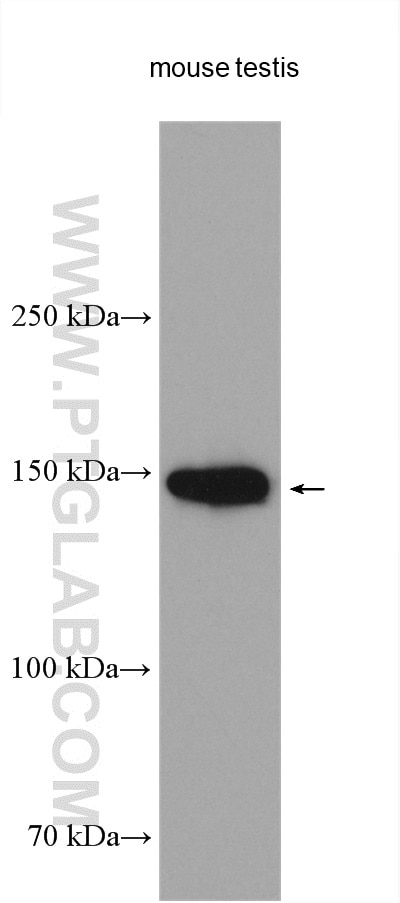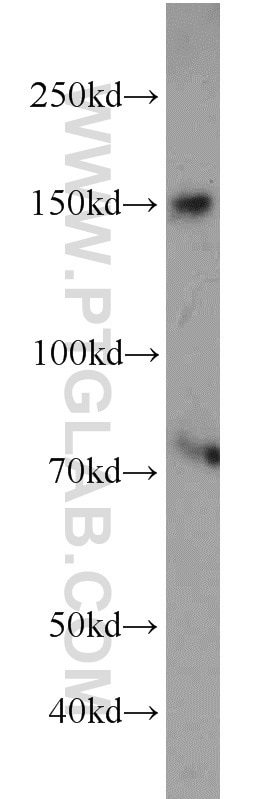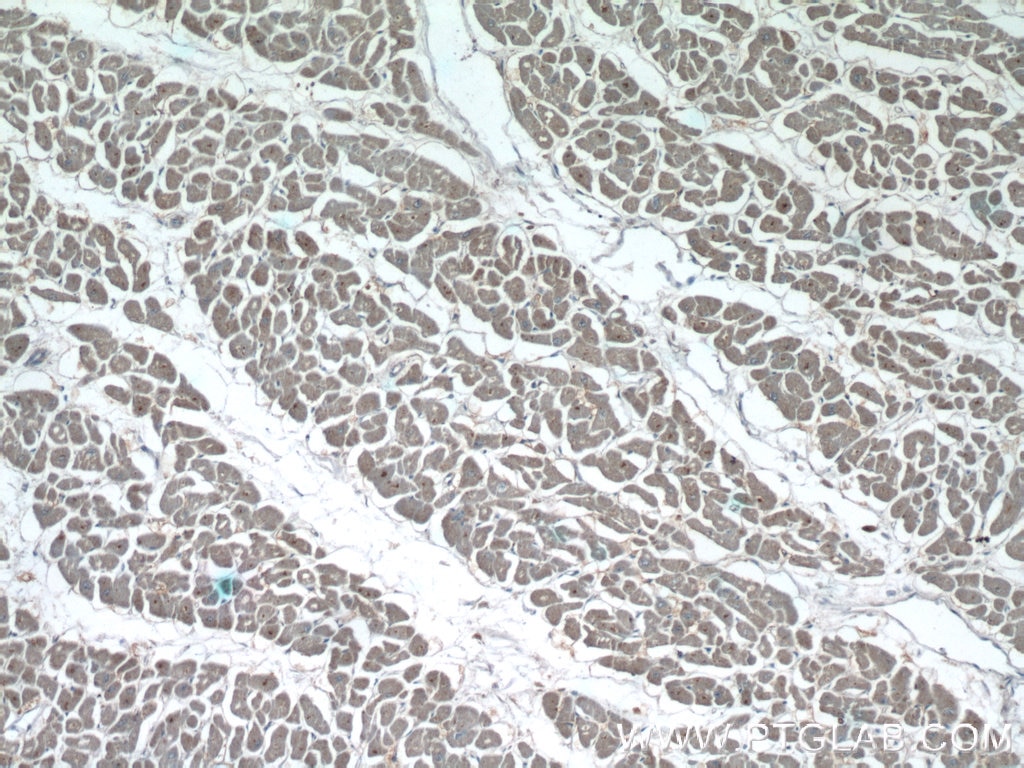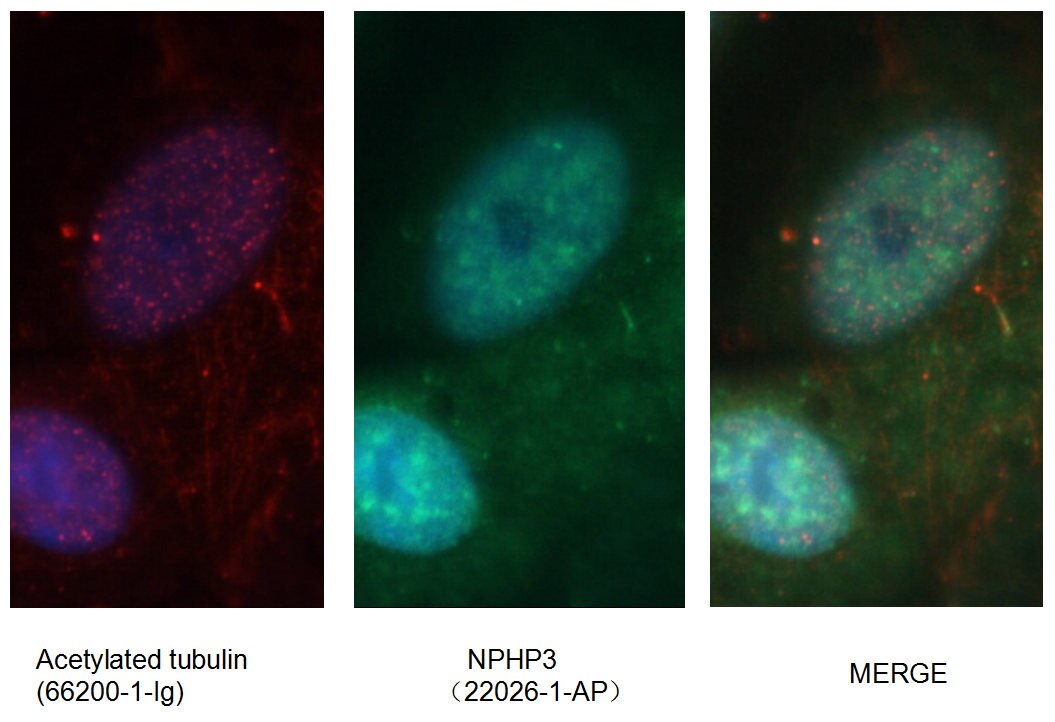NPHP3 Polyklonaler Antikörper
NPHP3 Polyklonal Antikörper für WB, IHC, IF/ICC, IP, ELISA
Wirt / Isotyp
Kaninchen / IgG
Getestete Reaktivität
human, Hund, Maus, Ratte
Anwendung
WB, IHC, IF/ICC, IP, ELISA
Konjugation
Unkonjugiert
Kat-Nr. : 22026-1-AP
Synonyme
Geprüfte Anwendungen
| Erfolgreiche Detektion in WB | Maushodengewebe, HEK-293-Zellen, HepG2-Zellen, humanes Hodengewebe, Mauslebergewebe |
| Erfolgreiche IP | Maushodengewebe |
| Erfolgreiche Detektion in IHC | humanes Herzgewebe Hinweis: Antigendemaskierung mit TE-Puffer pH 9,0 empfohlen. (*) Wahlweise kann die Antigendemaskierung auch mit Citratpuffer pH 6,0 erfolgen. |
| Erfolgreiche Detektion in IF/ICC | hTERT-RPE1-Zellen, MDCK-Zellen |
Empfohlene Verdünnung
| Anwendung | Verdünnung |
|---|---|
| Western Blot (WB) | WB : 1:500-1:2000 |
| Immunpräzipitation (IP) | IP : 0.5-4.0 ug for 1.0-3.0 mg of total protein lysate |
| Immunhistochemie (IHC) | IHC : 1:20-1:200 |
| Immunfluoreszenz (IF)/ICC | IF/ICC : 1:20-1:200 |
| It is recommended that this reagent should be titrated in each testing system to obtain optimal results. | |
| Sample-dependent, check data in validation data gallery | |
Veröffentlichte Anwendungen
| WB | See 1 publications below |
| IHC | See 1 publications below |
| IF | See 5 publications below |
Produktinformation
22026-1-AP bindet in WB, IHC, IF/ICC, IP, ELISA NPHP3 und zeigt Reaktivität mit human, Hund, Maus, Ratten
| Getestete Reaktivität | human, Hund, Maus, Ratte |
| In Publikationen genannte Reaktivität | human, Maus |
| Wirt / Isotyp | Kaninchen / IgG |
| Klonalität | Polyklonal |
| Typ | Antikörper |
| Immunogen | NPHP3 fusion protein Ag16888 |
| Vollständiger Name | nephronophthisis 3 (adolescent) |
| Berechnetes Molekulargewicht | 1330 aa, 151 kDa |
| Beobachtetes Molekulargewicht | 145-151 kDa |
| GenBank-Zugangsnummer | BC068082 |
| Gene symbol | NPHP3 |
| Gene ID (NCBI) | 27031 |
| Konjugation | Unkonjugiert |
| Form | Liquid |
| Reinigungsmethode | Antigen-Affinitätsreinigung |
| Lagerungspuffer | PBS with 0.02% sodium azide and 50% glycerol |
| Lagerungsbedingungen | Bei -20°C lagern. Nach dem Versand ein Jahr lang stabil Aliquotieren ist bei -20oC Lagerung nicht notwendig. 20ul Größen enthalten 0,1% BSA. |
Protokolle
| PRODUKTSPEZIFISCHE PROTOKOLLE | |
|---|---|
| WB protocol for NPHP3 antibody 22026-1-AP | Protokoll herunterladen |
| IHC protocol for NPHP3 antibody 22026-1-AP | Protokoll herunterladenl |
| IF protocol for NPHP3 antibody 22026-1-AP | Protokoll herunterladen |
| IP protocol for NPHP3 antibody 22026-1-AP | Protokoll herunterladen |
| STANDARD-PROTOKOLLE | |
|---|---|
| Klicken Sie hier, um unsere Standardprotokolle anzuzeigen |
Publikationen
| Species | Application | Title |
|---|---|---|
Nat Methods Genetically encoded calcium indicator illuminates calcium dynamics in primary cilia. | ||
Am J Hum Genet ARL3 Mutations Cause Joubert Syndrome by Disrupting Ciliary Protein Composition. | ||
Hum Mol Genet Translational read-through of the RP2 Arg120stop mutation in patient iPSC-derived retinal pigment epithelial cells. | ||
Int J Mol Sci Ciliary Proteins Repurposed by the Synaptic Ribbon: Trafficking Myristoylated Proteins at Rod Photoreceptor Synapses. | ||
Mol Biol Cell Interactions between TULP3 tubby domain and ARL13B amphipathic helix promote lipidated protein transport to cilia | ||
Rezensionen
The reviews below have been submitted by verified Proteintech customers who received an incentive for providing their feedback.
FH Lelongt (Verified Customer) (12-10-2021) | Immunofluorescence is observed in mice cilia but is not restricted to the inversin compartment. Dilution has to be adjusted for WB since there are few bands.
|











